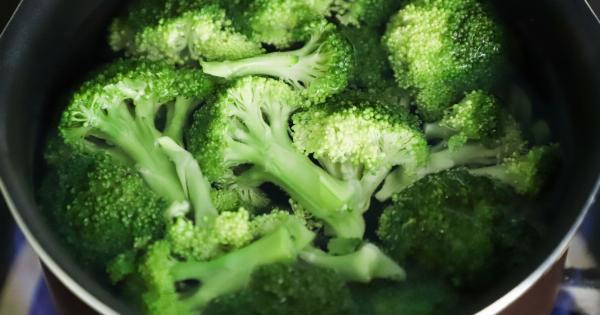When we talk about meat, we often categorize it into two main types: red meat and white meat. While red meat usually refers to meat that is obtained from mammals, such as beef or lamb, white meat typically comes from poultry and fish.
In this article, we will focus on the animals that are considered white meat and explore their nutritional benefits.
Poultry
Poultry is a common source of white meat and includes domesticated birds such as chickens, turkeys, ducks, and geese. These birds are lighter in color and have relatively lower amounts of connective tissue compared to red meat sources.
Chicken is one of the most widely consumed white meats around the world. It is versatile, lean, and an excellent source of high-quality protein. Chicken also provides essential nutrients such as vitamin B6, vitamin B12, selenium, and phosphorus.
Whether you enjoy grilled chicken breasts or a hearty bowl of chicken soup, there are countless ways to incorporate chicken into your diet.
Turkey is another popular white meat, particularly during festive occasions like Thanksgiving. Like chicken, turkey is a great source of lean protein and is rich in nutrients like zinc, potassium, and magnesium.
Turkey can be roasted, grilled, or even ground to prepare delicious burgers or meatballs.
Duck and goose are considered dark-fleshed poultry due to their higher fat content. However, their breast meat is still classified as white meat. Their unique flavor and tenderness make them a popular choice for gourmet dishes and festive meals.
Pork
Pork is often classified as white meat, although some cuts can have a slightly reddish appearance. It is the meat obtained from pigs and is widely consumed in various cuisines worldwide.
Lean cuts of pork, such as tenderloin, loin chops, and pork chops, are considered white meat and are relatively low in fat. Pork is an excellent source of protein, vitamins, and minerals, including thiamine, niacin, vitamin B6, phosphorus, and zinc.
It is incredibly versatile and can be prepared in numerous ways, from grilling and roasting to slow cooking and stir-frying.
However, it’s important to note that processed pork products like sausages, bacon, or cured meats may contain higher amounts of fat, sodium, and other additives. So, moderation is key when consuming processed pork products.
Fish
Fish and seafood are excellent sources of white meat that offer numerous health benefits. They are a rich source of high-quality protein and essential omega-3 fatty acids, which are beneficial for heart health and brain function.
Different types of fish vary in flavor, texture, and nutritional profiles.
Salmon, trout, mackerel, and sardines are oily fish that are particularly known for their higher fat content and omega-3 fatty acid content.
These fatty acids play a vital role in reducing inflammation in the body and may lower the risk of certain chronic diseases.
White fish, such as cod, haddock, tilapia, and sole, have a milder flavor and lower fat content compared to oily fish. They are excellent sources of lean protein and offer essential nutrients like phosphorus, selenium, and vitamin B12.
Shellfish, including shrimp, crab, lobster, and scallops, are also considered white meat. They are low in fat and rich in protein, vitamin B12, and minerals like zinc and selenium.
With their unique taste and texture, shellfish add a touch of elegance to various dishes.
Rabbit and Game Meat
Rabbit meat, often referred to as “the other white meat,” is lean, tender, and packed with nutrients. It is a popular choice for those looking for a low-fat alternative to traditional meats.
Rabbit meat offers a generous amount of protein, vitamins B3, B6, and B12, as well as minerals like iron and zinc. It has a mild, slightly sweet flavor and is commonly used in stews, roasts, and Mediterranean-inspired dishes.
Game meat is another category that includes animals like deer, venison, ostrich, and bison. Although the classification of game meat can vary, certain cuts of these animals can be classified as white meat due to their texture and low fat content.
Game meat is a nutritious option, rich in protein, iron, and other essential nutrients. It possesses a distinctive flavor and is often considered a delicacy in many cultures.
Choosing and Preparing White Meat
When selecting white meat, it is essential to choose high-quality and fresh cuts. Look for poultry with firm, pale, and slightly translucent flesh, while fresh fish should have clear, shiny eyes and bright gills.
For pork, opt for lean cuts with minimal visible fat.
White meat can be prepared using various cooking methods, each offering unique flavors and textures. It can be grilled, roasted, baked, stir-fried, or even poached, depending on the type of meat and the desired outcome.
It’s important to ensure proper cooking to prevent foodborne illnesses and to maximize flavor and tenderness.
While white meat is generally considered healthier than red meat due to its lower fat content, it’s still important to balance your overall diet.
Incorporate a variety of protein sources, including both white and red meats, legumes, and plant-based options, to ensure a well-rounded nutritional intake.
Conclusion
White meat encompasses a diverse range of animals, each offering unique flavors, textures, and nutritional benefits. Poultry, pork, fish, rabbit, and certain game meats fall under the category of white meat.
These animal sources provide high-quality protein, essential vitamins, and minerals. Incorporating white meat into your diet can contribute to a balanced and nutritious eating plan.
Remember to choose lean cuts, use proper cooking methods, and maintain a well-balanced overall diet. Exploring the different sources of white meat opens up a world of culinary possibilities, ensuring both taste and health benefits.





























